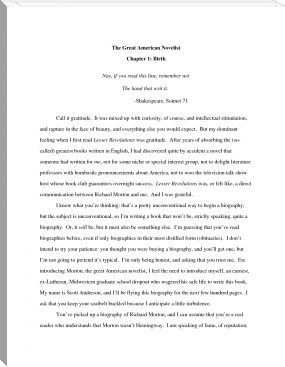Redgauntlet: A Tale of the Eighteenth Century by Walter Scott (books for students to read .txt) 📖

- Author: Walter Scott
Book online «Redgauntlet: A Tale of the Eighteenth Century by Walter Scott (books for students to read .txt) 📖». Author Walter Scott
CONTENTS
INTRODUCTION
REDGAUNTLET
LETTER I
LETTER II
LETTER III
LETTER IV
LETTER V
LETTER VI
LETTER VII
LETTER VIII
LETTER IX
LETTER X
LETTER XI
LETTER XII
LETTER XIII
CHAPTER I
CHAPTER II
CHAPTER III
CHAPTER IV
CHAPTER V
CHAPTER VI
CHAPTER VII
CHAPTER VIII
CHAPTER IX
CHAPTER X
CHAPTER XI
CHAPTER XII
CHAPTER XIII
CHAPTER XIV
CHAPTER XV
CHAPTER XVI
CHAPTER XVII
CHAPTER XVIII
CHAPTER XIX
CHAPTER XX
CHAPTER XXI
CHAPTER XXII
CHAPTER XXIII
CONCLUSION
NOTES
GLOSSARY
Original Transcriber’s Note: Footnotes in the printed book have been inserted in the etext in square brackets [] close to the place where they were referenced by a suffix in the original text. Text in italics has been written in capital letters. There are some numbered notes at the end of the text that are referred to by their numbers with brief notes, also in square brackets, embedded in the text.
The Jacobite enthusiasm of the eighteenth century, particularly during the rebellion of 1745, afforded a theme, perhaps the finest that could be selected for fictitious composition, founded upon real or probable incident. This civil war and its remarkable events were remembered by the existing generation without any degree of the bitterness of spirit which seldom fails to attend internal dissension. The Highlanders, who formed the principal strength of Charles Edward’s army, were an ancient and high-spirited race, peculiar in their habits of war and of peace, brave to romance, and exhibiting a character turning upon points more adapted to poetry than to the prose of real life. Their prince, young, valiant, patient of fatigue, and despising danger, heading his army on foot in the most toilsome marches, and defeating a regular force in three battles—all these were circumstances fascinating to the imagination, and might well be supposed to seduce young and enthusiastic minds to the cause in which they were found united, although wisdom and reason frowned upon the enterprise.
The adventurous prince, as is well known, proved to be one of those personages who distinguish themselves during some single and extraordinarily brilliant period of their lives, like the course of a shooting-star, at which men wonder, as well on account of the briefness, as the brilliancy of its splendour. A long tract of darkness overshadowed the subsequent life of a man who, in his youth, showed himself so capable of great undertakings; and, without the painful task of tracing his course farther, we may say the latter pursuits and habits of this unhappy prince are those painfully evincing a broken heart, which seeks refuge from its own thoughts in sordid enjoyments.
Still, however, it was long ere Charles Edward appeared to be, perhaps it was long ere he altogether became, so much degraded from his original self; as he enjoyed for a time the lustre attending the progress and termination of his enterprise. Those who thought they discerned in his subsequent conduct an insensibility to the distresses of his followers, coupled with that egotistical attention to his own interests which has been often attributed to the Stuart family, and which is the natural effect of the principles of divine right in which they were brought up,
 Have you ever thought about what fiction is? Probably, such a question may seem surprising: and so everything is clear. Every person throughout his life has to repeatedly create the works he needs for specific purposes - statements, autobiographies, dictations - using not gypsum or clay, not musical notes, not paints, but just a word. At the same time, almost every person will be very surprised if he is told that he thereby created a work of fiction, which is very different from visual art, music and sculpture making. However, everyone understands that a student's essay or dictation is fundamentally different from novels, short stories, news that are created by professional writers. In the works of professionals there is the most important difference - excogitation. But, oddly enough, in a school literature course, you don’t realize the full power of fiction. So using our website in your free time discover fiction for yourself.
Have you ever thought about what fiction is? Probably, such a question may seem surprising: and so everything is clear. Every person throughout his life has to repeatedly create the works he needs for specific purposes - statements, autobiographies, dictations - using not gypsum or clay, not musical notes, not paints, but just a word. At the same time, almost every person will be very surprised if he is told that he thereby created a work of fiction, which is very different from visual art, music and sculpture making. However, everyone understands that a student's essay or dictation is fundamentally different from novels, short stories, news that are created by professional writers. In the works of professionals there is the most important difference - excogitation. But, oddly enough, in a school literature course, you don’t realize the full power of fiction. So using our website in your free time discover fiction for yourself. 




Comments (0)